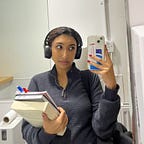COVID-19 and the Dangers of Accelerated Digitalisation
The speed at which we are developing essential technologies is leaving the most vulnerable behind
Digitalisation: the act of converting something physical to something digital as part of a wider transformation effort
Digitalisation is a word that has become increasingly familiar to the British population over the past year, as essential services have been moved online across the course of the pandemic: from grocery shopping to GP consultancies, to virtually every form of education. COVID has ensured that the physical has become digital in virtually every facet of life.
But while the word may have only recently entered public consciousness, digitalisation is not a recent development. We can see it beginning as far back as 2013, with the Department of Work and Pension’s publication of their Digital Strategy. This saw the British government undergoing a massive digitalisation effort with regards to welfare, specifically Universal Credit, which began rolling out in March 2016. This was an effort to cut costs, and while it undoubtedly succeeded in that aspect — with the previously mentioned Digital Strategy (2013) ‘estimate[d] that moving services from offline to digital channels will save between £1.7 and £1.8 billion a year’ — it soon became apparent that a glaring oversight had been made.
It was found that those who were most likely to rely on these now-digitalised services were simultaneously those who were least likely to possess both the physical technologies and the digital literacy to be able to access them. By placing such essential services online, only accessible through a mobile device or computer, the government completely overlooked the idea that portions of their population would not have access to these technologies. In fact, according to the DWP’s own 2018 survey, only 54 per cent of all UC claimants were able to apply online independently, without assistance, leaving almost half of claimants: an entire subset of Britain’s population -arguably the most vulnerable subset- left to drown in the sea of digitalisation.
In fact, following his visit to the UK, the UN’s Special Rapporteur on extreme poverty and human rights Professor Philip Alston observed that
“the British welfare state is gradually disappearing behind a webpage and an algorithm, with significant implications for those living in poverty.”
In the same report, he noted that the UK had effectively built a ‘digital barrier’ that obstructs access to welfare, particularly disadvantaging older people, people who do not speak English and persons with disabilities.
And it is precisely this type of digitalization that we are seeing today, accelerated by the pandemic.COVID-19 has thrust us into a technology-dependent timeframe decades faster than we could have imagined, and it is society’s most vulnerable who are paying the price. With schools being moved online, the education gap between the richest and poorest students has grown by 46%, according to a study by the National Foundation for Educational Research. It also throws into sharp focus the UK’s digital divide, which has been a reality for the 22% of the British population who lack basic digital skills since long before the Covid-19 outbreak.
“Digital exclusion was a problem before coronavirus, but this is compounding it.”
This has affected every sector of society, with technological services being rapidly rolled out to fill gaps in the market that did not exist pre-COVID, often without adequate testing or oversight, with disastrous consequences. A well- documented example of this is its impact on students, predominantly those from less-advantaged backgrounds. These students have already had to face the challenges that austerity has brought, of overcrowded classrooms, overworked teachers, less academic support and so on. And the digitalisation of the education sector has compounded these issues.
An example of this is the use of Artificial Intelligence powered software to prevent students from cheating in online exams. These softwares use facial recognition systems which have been proven time and time again to be less accurate reading dark-skinned faces. This algorithmic oversight had real-world consequences for hundreds of students who found themselves being locked out of their exams. Another example is the infamous A-Level results algorithm, I wrote about here, disproportionately marking down poorer pupils due to design oversights.
While these technologies were not overtly malicious in their design, the impacts were felt nonetheless, and easily foreseeable ones at that. These dangers have been present for years, and yet concerns have been brushed over so as not to come at the expense of innovation.
But the COVID-19 pandemic has thrust these issues back into the spotlight, making the real-world consequences of flawed technologies harder for lawmakers to ignore. We must take this time to re-examine the technologies that are becoming ever more integral to our daily lives and assess whether they are empowering or oppressive. Is your Amazon Ring convenient, or is it simply a tool of the police state? Is facial recognition technology an exciting development or yet another way for the justice system to wrongfully incarcerate Black men? Is Artificial Intelligence a way to unlock the vast potential of humanity, taking us to new frontiers or simply a way for military drones to bomb their targets more effectively?
The answer is both. All of these technologies have the potential to both reduce and entrench existing inequalities, and it is up to us to decide which way to go. These are questions that should have been tackled years ago, and while damage has undoubtedly been done, we must believe the tide can be turned.
